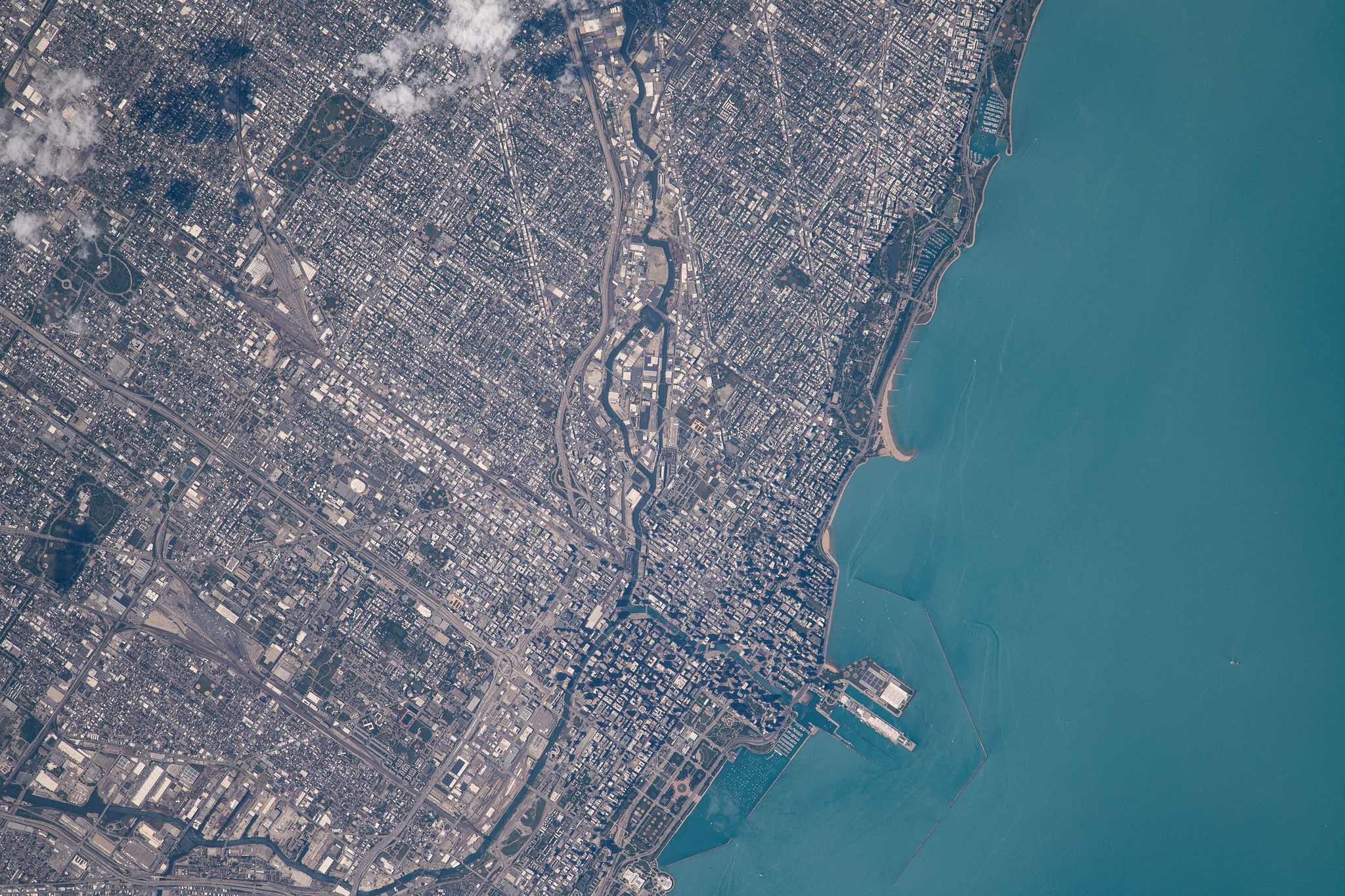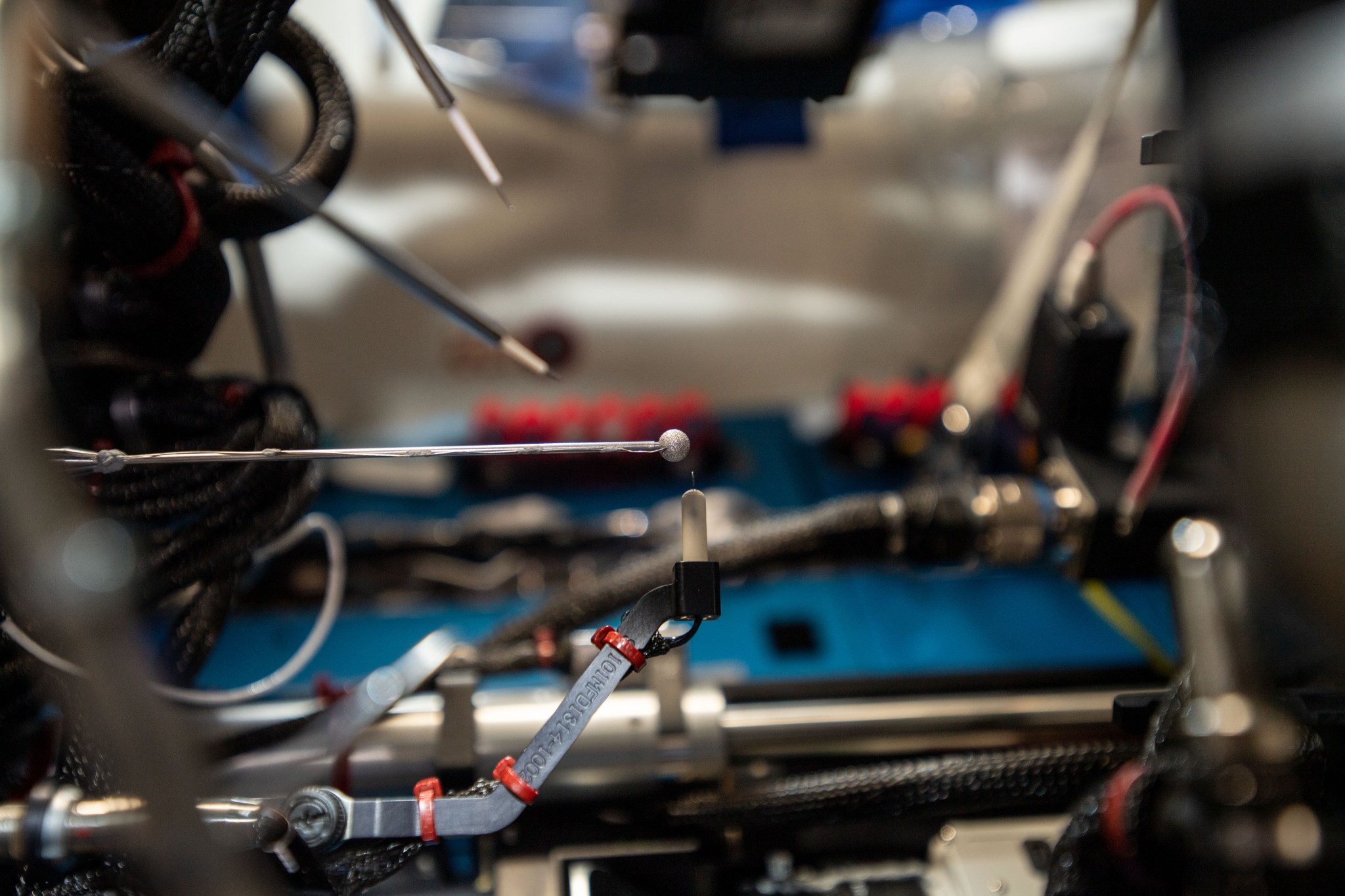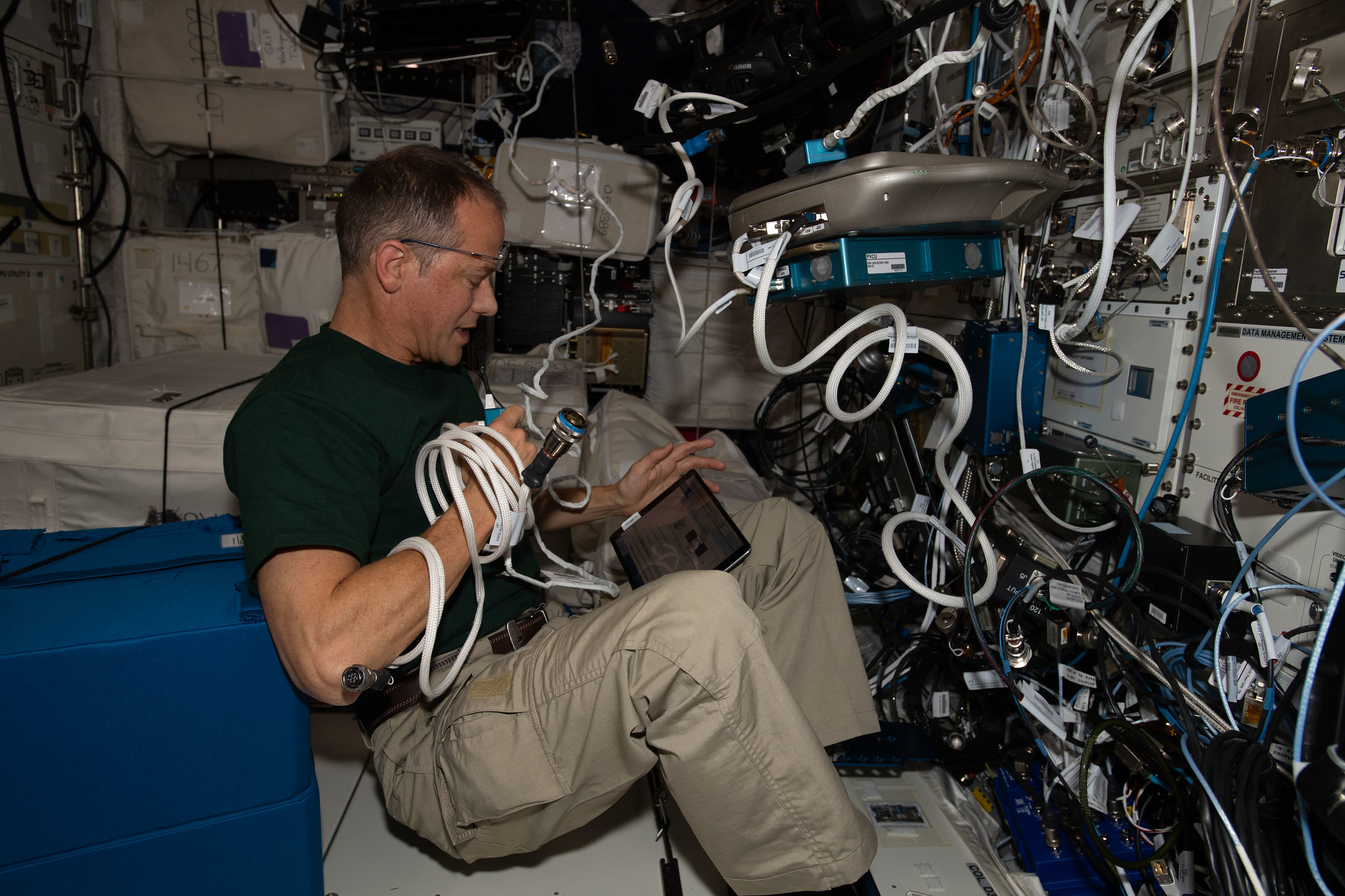
[Lea la versión en español de este artículo]
Crew members aboard the International Space Station conducted scientific investigations during the week of Dec. 13 that included assessment of body composition as well as bone and muscle loss in crew members, testing a wearable health monitor, and studying soot-free flames.
The space station, continuously inhabited by humans for 21 years, has supported many scientific breakthroughs. A robust microgravity laboratory with dozens of research facilities and tools, the station supports investigations spanning every major scientific discipline, conveying benefits to future space exploration and advancing basic and applied research on Earth. The orbiting lab also provides a platform for a growing commercial presence in low-Earth orbit that includes research, satellite services, and in-space manufacturing.
Here are details on some of the microgravity investigations currently taking place:
Eat this, not that
Long-duration spaceflight can cause changes in body composition such as bone and muscle loss. An investigation from ESA (European Space Agency), NutrISS periodically assesses body composition, including weight, fat mass, and fat-free mass, and measures long-term energy balance modification over time. One way to help mitigate microgravity-induced bone and muscle loss by crew members could be to adjust their diet by, for example, increasing protein intake. The investigation may improve understanding of the mechanisms behind body composition changes during spaceflight and help lead to ways to mitigate any negative effects of those changes. Results also could help improve quality of life on Earth by contributing to better clinical management of people with body mass issues on Earth. During the week, crew members answered an experiment questionnaire and performed a body composition analysis measurement session.
Keep your shirt on
The Canadian Space Agency (CSA) Bio-Monitor investigation performs on-orbit monitoring of crew member health. The technology includes a smart shirt and dedicated tablet application in place of bulky and invasive medical devices that can be disruptive and time-consuming to use. The shirt records the wearer’s physical activity, heart rate, and respiration; takes regular blood pressure readings; and estimates arterial stiffness. In addition to monitoring astronaut health, the technology could help people on Earth who are bedridden, housebound, or living in rural communities with limited access to medical support. It also could be worn by workers in dangerous environments such as mines, industrial sites, or factories. After conducting operations for the investigation, crew members performed a final stow of the device.
Better burning

The crew replaced fuel bottles in support of the on-going Flame Design investigation, which studies the production and control of soot in oxygen-enriched combustion and the design of soot-free flames. Soot can adversely affect efficiency, emissions, and equipment lifetime, so this research may lead to cleaner and more efficient burner designs for combustion applications on Earth. Findings also could aid the development of future space-based combustion devices for tasks such as solid waste processing or to improve spacecraft fire safety. The experiment is conducted with spherical flames of gaseous fuels in the Combustion Integrated Rack (CIR) as part of the Advanced Combustion via Microgravity Experiments (ACME) project.
Other investigations involving the crew:

- Myotones, an ongoing investigation from ESA, observes properties of muscles and assesses the mechanisms involved in muscle adaptation to spaceflight. The work could support development of ways to protect muscular function on future space missions and in clinical settings on Earth.
- An investigation from the Canadian Space Agency (CSA), Vascular Aging, analyzes changes in the arteries of crew members using artery ultrasounds, blood samples, oral glucose tolerance testing, and wearable sensors. Results could help researchers assess the risks to astronaut cardiovascular health and potentially point to mechanisms to reduce those risks.
- The Dreams investigation from ESA uses a headband to monitor sleep quality of crew members. Sleep is vital to human health and well-being, helping to repair and reset the body for optimal performance and reducing the risk of certain medical conditions such as cardiovascular disease.
- InSPACE-4 studies magnetic assembly of structures from colloids, or particles suspended in a liquid in microgravity. Results could lead to more advanced materials for space applications, including thermal shields, protection from micrometeorites, energy production, and sensors for robotic and human missions.
- Phospho-aging, an investigation from the Japan Aerospace Exploration Agency (JAXA), examines the molecular mechanism behind aging-like symptoms, such as bone and muscle loss, that can occur more rapidly in microgravity. Results could lead to the development of more effective countermeasures.
- Touching Surfaces tests laser-structured antimicrobial surfaces as a method for reducing microbial contamination aboard the space station. Results from this ESA investigation could help determine the most suitable design for antimicrobial surfaces for spacecraft and habitats as well as for terrestrial applications such as public transportation and clinical settings.
- Space Studio KIBO from JAXA is a broadcasting studio that can livestream activities, interactive entertainment, and communication from space and receive uplinked video and audio from a ground studio. Part of JAXA Space Innovation through Partnership and Co-Creation (J-SPARC), the program aims to create new space-related businesses.
For daily updates, follow @ISS_Research, Space Station Research and Technology News, or our Facebook. Follow ISS National Lab for information on its sponsored investigations. For opportunities to see the space station pass over your town, check out Spot the Station.
John Love, ISS Research Planning Integration Scientist
Expedition 66

























